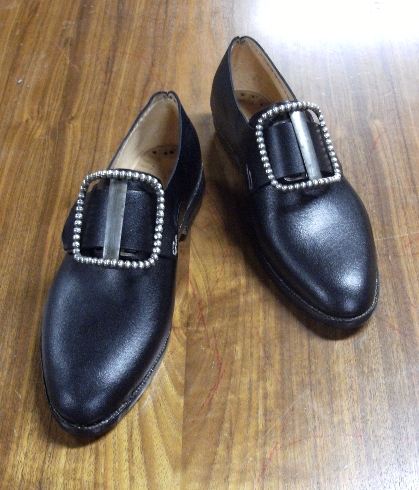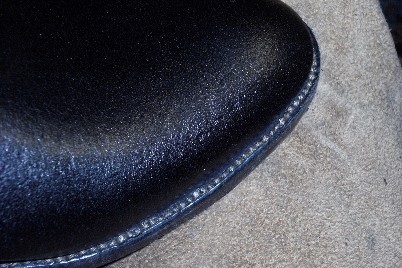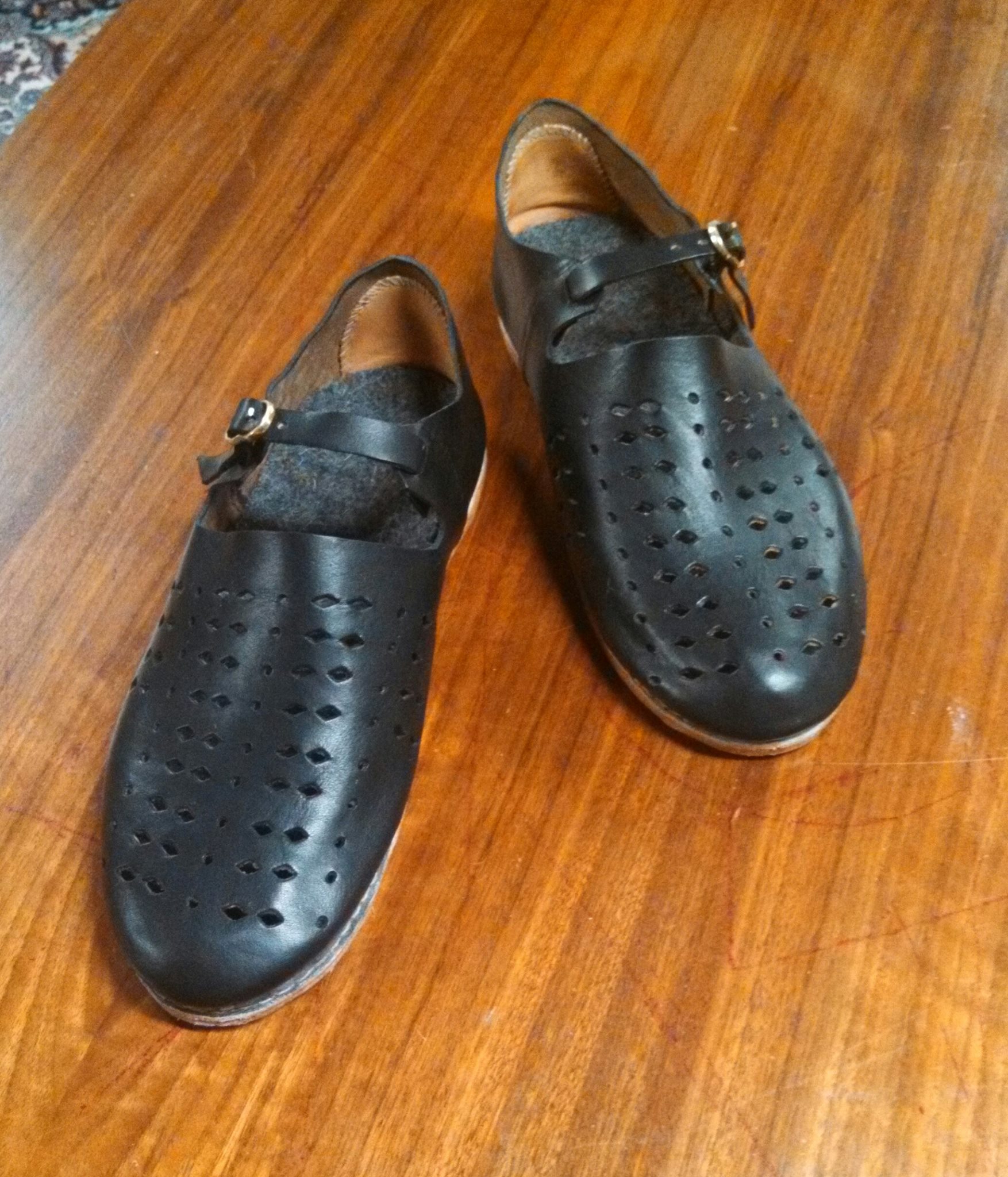A new pair of 14th century buckle shoes with a punchwork design of discs and diamonds. These are turn-welted with a pasted-in wool sock. A whipped-in stiffener and brass buckle complete the piece. Looking back, I think that these shoes would look better with a more pointed toe, but perhaps that is the medievalist in me jumping out =) In truth, there is evidence for a variety of shoe types in the 14th century, both round and pointed, but I must admit some partiality to the gothic points.
Category Archives: Other Projects
Viking Shoes based on finds in York…
Jumping back several centuries, I present you a pair of Viking shoes based on finds in York. The leather was curried with cod liver oil and tallow, and I really like the way that they came together. It’s hard to see in this image, but the heel extends in a triangle in the back like many Viking shoes. There is a felt wool sock pasted in. A few interesting things on these shoes besides the currying – the straps are held in by tension alone – no sewing. That is, three slits are cut in the leather and the thongs are laced through them with a snug fit. This allows the wearer to adjust the position of both toggles and straps, and to easily replace them should they be torn or damaged. This technique was also done in the 16th century with shoes found on the Mary Rose, sunk off the Solent in 1545.
1600s Heel with Edge Decoration
Yes, another 1600s shoe, but hey – why quit when you have a good thing going? =) I do try and do new things with every piece, and this one was no exception. In this case, when I visited the Museum of London, I was fortunate enough to be able to look at many of the stored leather pieces that they had in the cabinets. I’m sure I mentioned it in a previous post – anyhow, one of the things that impressed me was the level of detail in so many of the shoes.
In some cases, there were lines of fine tunnel stitching along the surface and opening of the shoe. In fact, this was even visible on many shoes from the wreck of the Mary Rose in 1545, and those guys were sailors! A point of note is that a far majority of shoes had some kind of reinforcement along the opening, either a top band or some kind of stitching like this.
How about some background and construction shots:
Continue reading 1600s Heel with Edge Decoration
1780s Shoes – Finished Products!
I had meant to write this up into an official lesson, but to tell the truth, I think I can do better on the next pair! I learned an incredible amount on these shoes, and although I do plan to make another pair at some point soon, I think that these are of sufficient quality to present here. In truth, they knock the socks off of my Lesson 5, and I’m far more pleased with them. The upper leather is black waxed calf from Dickens Brothers, one of the oldest leather merchants in the UK. Further, it is precisely what the shoemakers in Colonial Williamsburg use. The insole, rand, and outsole leather is from Joh. Rendenbach. Both leathers were an absolute pleasure to work with.
The buckles themselves are actual antique 18th century silver buckles. These buckles are neat in that they are “clasp” buckles, where a small button is pressed and the actual strap attachment hinges out of the buckle proper. Then, once the shoe is buckled, the silver portion is clicked back in to place. Quite neat!

|

|
|


